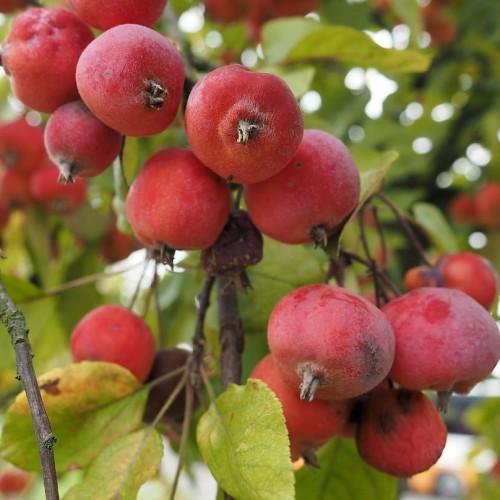
crabapple
Malus 'Callaway'
Cycle:
Perennial
Watering:
Average
Hardiness Zone:
5 - 8
Flowers:
Flowers In Spring
Sun:
Full sun
Fruits:
Fruits Ready In Fall
Edible:
Yes
Leaf:
Yes
Growth Rate:
High
Maintenance:
Low
Thorny:
Yes
Care Level:
Medium
watering
For a Crabapple (Malus 'Callaway'), watering should be done when the top inch of soil is dry. Depending on temperature and other environment conditions, this would require watering anywhere from once a week to once every 2 weeks. Make sure to properly moisten the soil to a depth of roughly 8 inches. During the warmer months it is important to ensure the soil does not dry out completely; however it is also important not to over water as too much moisture can promote root rot.
sunlight
Crabapple (Malus 'Callaway') requires 6 to 8 hours of direct sunlight each day to thrive. This hardy species enjoys full sun during the summer months but can tolerate some shade during the spring and fall when temperatures are more moderate. It does best in an area where it receives the most amount of direct sunlight from mid-morning through mid-afternoon. In areas with high temperatures throughout the summer, it is beneficial to shelter the plant with partial shade to avoid the leaves getting sunburned and withered. In order for the plant to flower and bear fruit, it should get at least 6 hours of direct sunlight each day.
pruning
Crabapple (Malus 'Callaway') should be pruned each year in late winter or early spring, when the tree is still dormant. Start by removing any dead, broken, or diseased branches and then cut off any crossing branches. Prune back any branches that are rubbing against 1 another and ones that are growing too close together. Also, prune any weak or spindly growth and shape your tree by reducing the length of the main branches, if desired. Finally, thin out the canopy to encourage new growth and a dense shape. Take care not to over-prune, as it can leave the tree open to disease.
